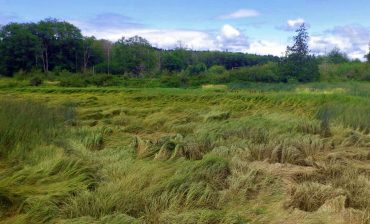
This time of the year provides some of the best birdwatching. A walk on the “edge” will produce the largest variety of bird species. Forests and heavy brush bordering fields, wetlands and other open areas create this edge effect birds are drawn to.
At this time of the year, the natural food supply is at its peak. Large numbers of young birds have pushed the populations to their highest level. This combination creates interesting and active birdwatching.
Birds are habitat-specific. Walking the edge where two or more habitat types come together allows birders to see more different species than if they birded only one habitat type.
Shorebirds inhabit tidelands. Hawks hunt over fields. Woodpeckers are attracted to a forest’s trees. Places where all three meet one another attracts the greater variety.
Boardwalks that wind through thick trees or snake along the edge of a meadow create excellent “edge” walks. Several communities in West Sound country have created these in local parks.
These areas make it easy to combine various habitat types and see a variety of birds. Poulsbo and Silverdale have good “edge” walks on Liberty Bay and Fish Park as well as the Clear Creek Trail. One of the most popular walks is through the Theler Wetlands in Belfair.
Theler’s walk begins on a boardwalk through a boggy forest where skunk cabbage and ferns grow under the trees. Winter wrens and woodpeckers are found in this habitat. Where the walk breaks into the open, manmade ponds and a vast, grassy estuary introduce more habitat types. Red-winged blackbirds, various ducks and grebes are found in the ponds.
The boardwalk changes to a path along a dike where pasture is on one side and the Union River flows into the estuary on the other. Mergansers and cormorants fish the river. Kingfishers and osprey also fish this area.
The brush and deciduous trees found along this dike walk attract cedar waxwings, house finches, purple finches and goldfinches as well as towhees, song sparrows, warblers, bushtits and flycatchers.
Ducks and geese feed in the pasturelands and a variety of swallows hunt over them and over the marshlands. Migrating turkey vultures use this route during migration and along with red-tailed hawks, join the eagles in the sky over the preserve.
Excellent “edge” walks can be found throughout the West Sound. It is worth taking the time to explore them at this time of the year. Good weather, an abundance of natural food and a bird population at its peak make this the best time to walk the edge.


























Comments